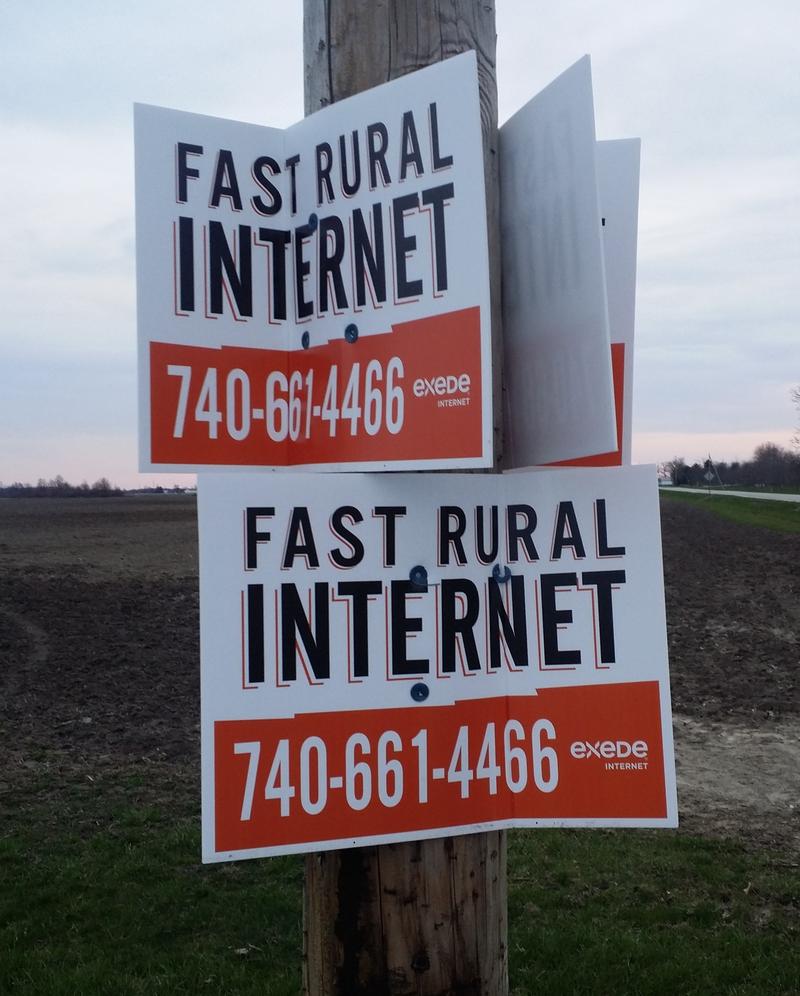
About 98 percent of Ohioans have access to basic broadband internet. But some rural Ohioans struggle to get any sort of connection at all. Now satellite-to-dish internet service providers are scrambling to fill the void.
Listen Listening…4:32 Hear the Story!
Semi-retired attorney Nick Pittner spends part of his free time talking to people all over the world. But he does not use the internet. Pittner is a ham radio enthusiast. He’d love to have high speed internet service at his rural Madison County home. But the local cable company, he says, refuses to connect him and some 4 dozen of his neighbors because of their remote location.
“With the amateur radio station I can talk to people virtually all around the world. And yet I don’t – nor do my neighbors have – access to the current internet technology that would give them the ability to fully enjoy that,” Pittner says.
So Pittner uses a Verizon Wireless cellphone signal to use the web. The set-up, he says, is slow.
“I’m going to bring up a browser and I can access email. Or try to. It’s waiting. But okay, there’s email, so, within the restrictions that we have, when it works, it’s fine,” he says.
And it’s expensive. $80 a month.
Thousands of rural Ohioans are in similar straits, especially in southern and southeast Ohio. Lindsay Shanahan, head of the internet advocacy group Connect Ohio, says 3 Mbps is basic broadband internet speed.
“At that 3 meg basic broadband, we do show that 98 percent of Ohioans are served by that so they have access to it. However, the 3 out of four households that do not have access to this speed are in Appalachia. So we’re seeing a centralized issue in the southern and southeastern counties of Ohio,” Shanahan says.
But signs on rural lawns and telephone poles indicate someone is trying to tap into the unconnected market. One is the satellite company ViaSat which offers a home internet service known as “Exede.”
“Everybody needs access to the internet these days and if you have a slow connection, it’s very frustrating,” says Matthew Farr, ViaSat’s communications director.
“The service that we offer is a very fast service that allows for things like HD video streaming and you can get it now,” Farr says.
It’s a two-way satellite system. A dish installed on the roof connects the home to the internet.
Farr says ViaSat provides Exede to 700,000 customers in all 50 states. Customers sign up for service at a local dealer.
“We have something like 2500 dealers across the United States. These are typically small businesses in small towns and you can place an order with them … an installer does come out and takes care of everything – puts the dish on your roof and wires in a modem,” Farr says.
Exede is not as fast as some cable or certain phone providers. But Farr says a new satellite will be launched next year which will rival internet speeds from other sources. Current service costs between $50 and $60 a month.
“You know you can always find something cheaper – at least in some areas you can. But we think we offer good value for the money; we offer consistent reliable speeds,” Farr says.
Meanwhile, as ViaSat’s telephone pole and yard sign advertising blitz continues, advocates continue to push for more broadband connections. Nick Pittner wants the government to mandate connectivity. Such legislation, he says, has been passed before.
“In the interest of providing what today for people in Madison County is the equivalent of electricity in 1936 when the federal government passed the Rural Electrification Act and made it mandatory for everybody. It certainly should be mandatory. It apparently isn’t,” Pittner says.
[“Source-wosu”]













